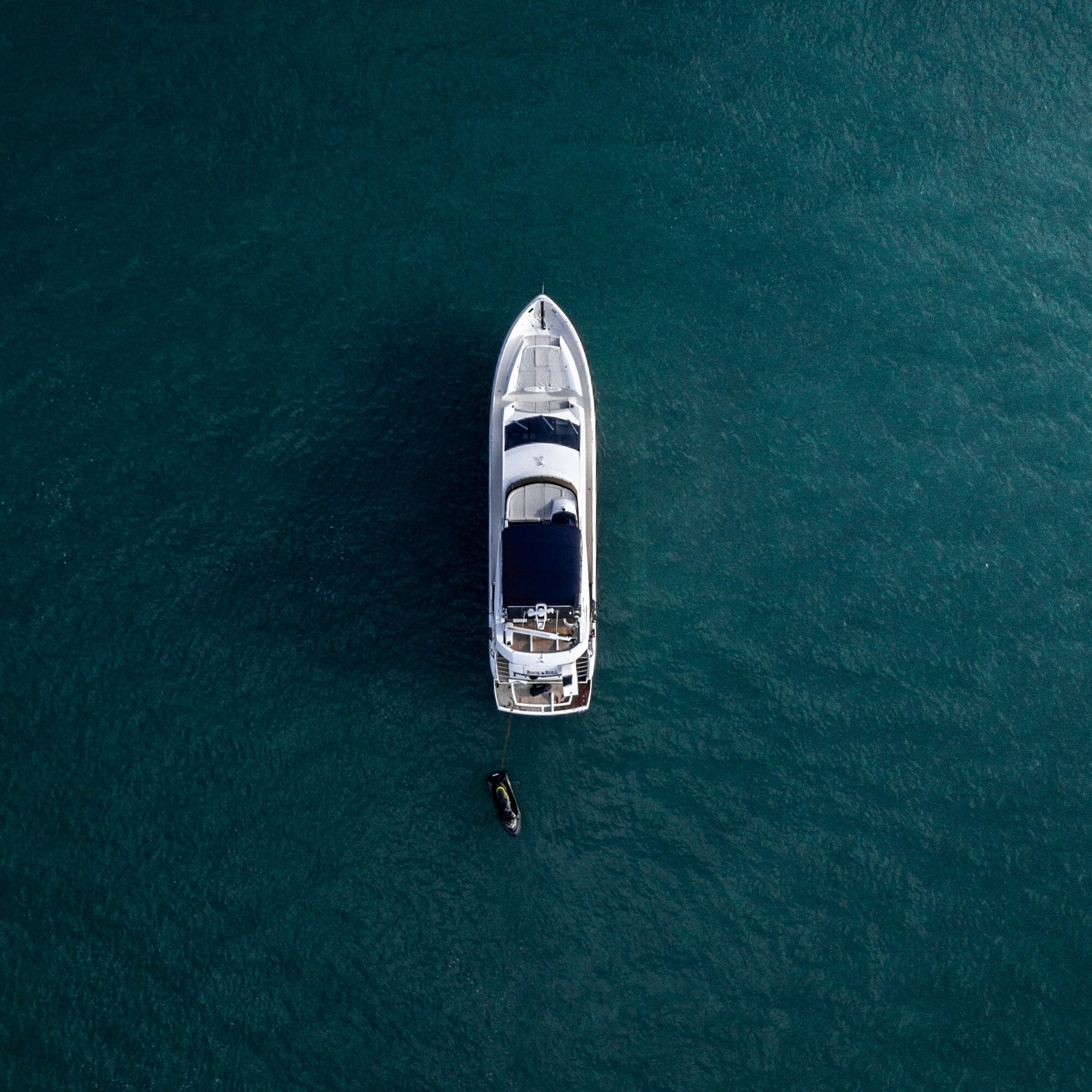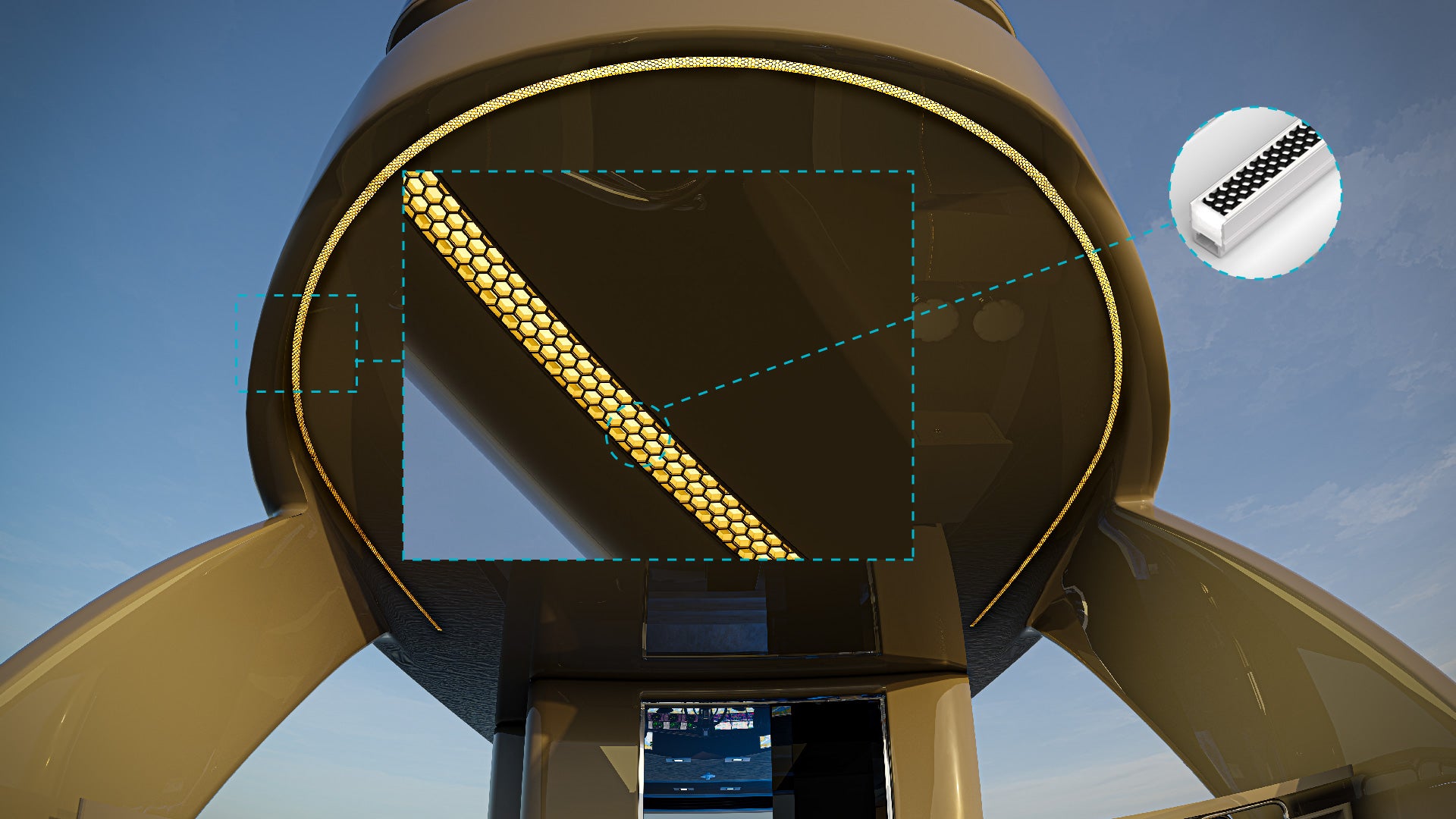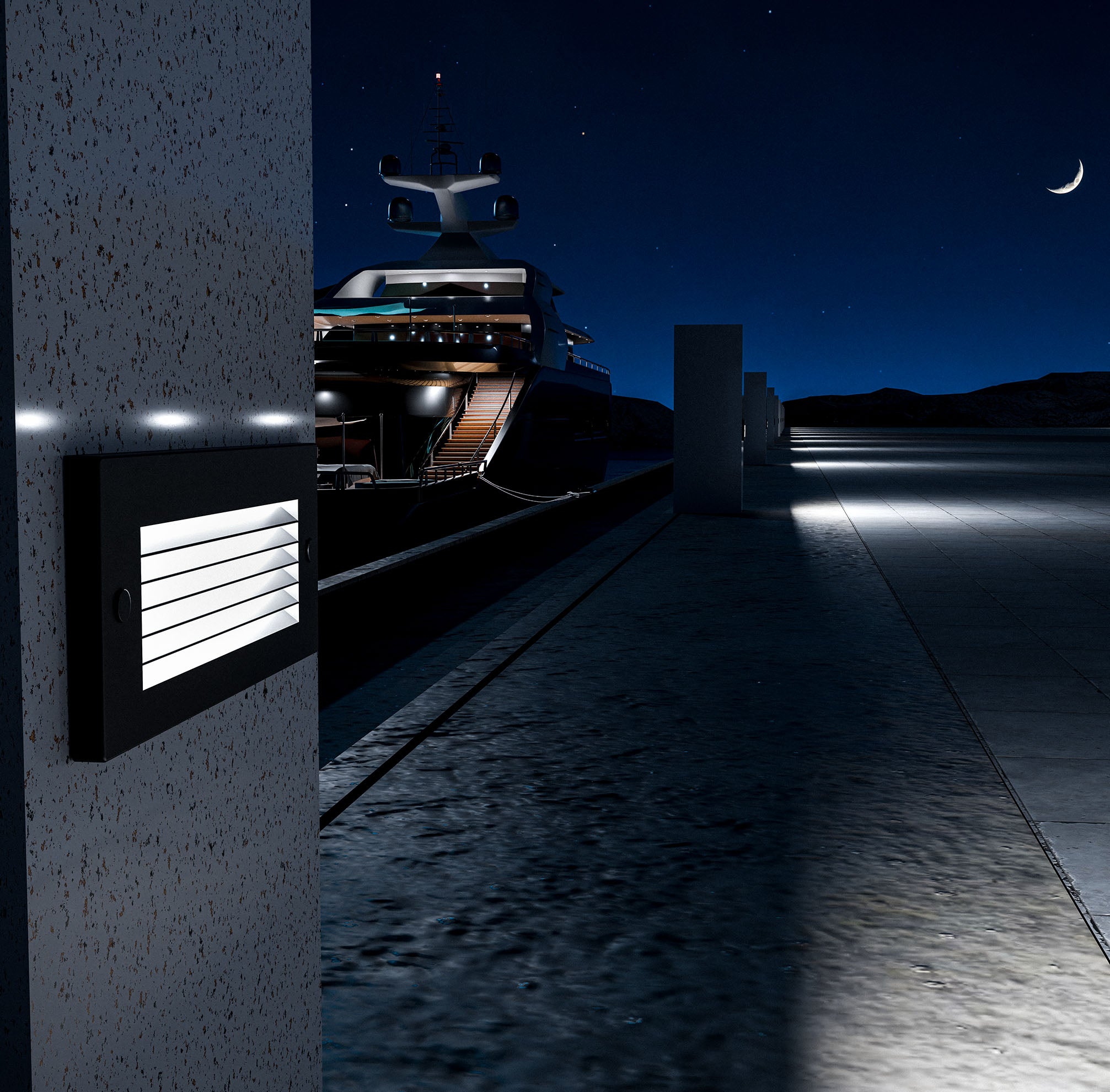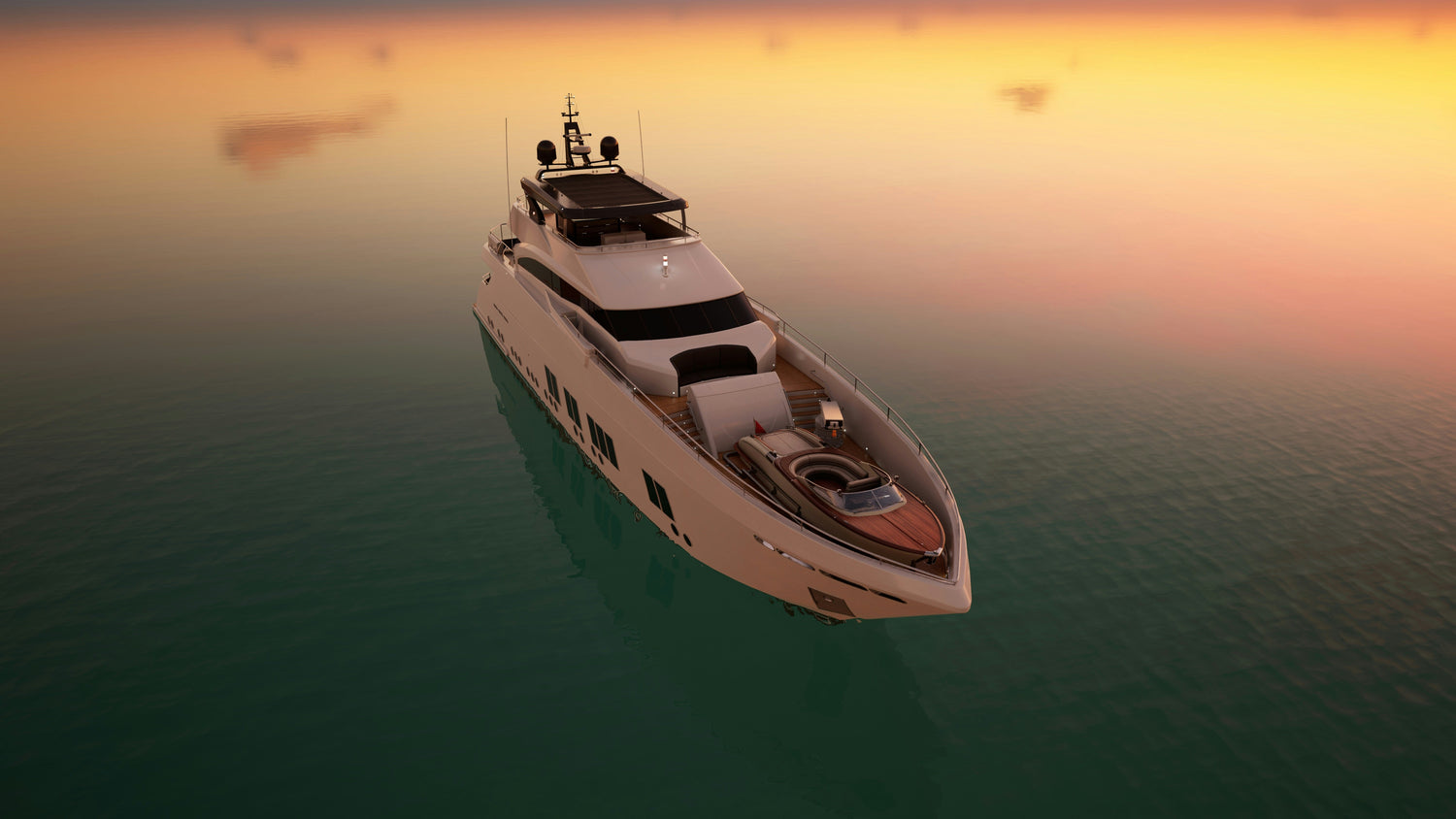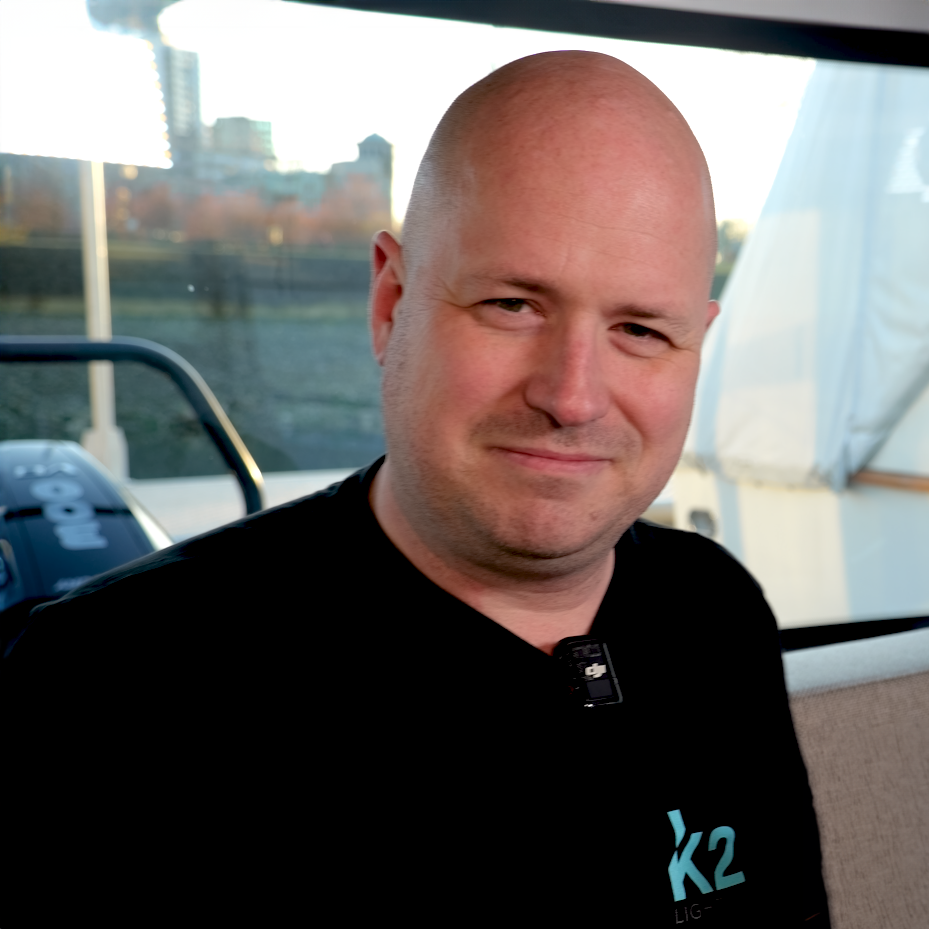Understanding color temperature is essential for creating the perfect ambiance, functionality, and safety aboard your vessel. Here's everything you need to know to make informed lighting decisions.
When upgrading or designing your yacht's lighting system, one of the most critical yet often overlooked decisions is selecting the appropriate color temperature. The right choice can transform your vessel's atmosphere, enhance safety during nighttime operations, and even improve your crew's well-being during extended voyages. This comprehensive guide will help you navigate the spectrum of LED color temperatures to create the ideal lighting environment for every area of your yacht.
Understanding the Kelvin Scale
Color temperature is measured in Kelvin (K) and describes the color appearance of white light emitted by a light source. The Kelvin scale ranges from warm, yellowish tones at the lower end to cool, bluish hues at the higher end.
Common Color Temperature Ranges:
- Ultra Warm White (2200K-2700K): Very warm, candlelight glow
- Warm White (2700K-3000K): Yellowish, cozy atmosphere similar to traditional incandescent bulbs
- Natural White (4000K-4500K): Balanced, neutral light resembling natural daylight
- Cool White (5000K-6500K): Crisp, bright white light with a slight blue tint
The higher the Kelvin value, the "cooler" and more blue-tinted the light appears. Conversely, lower Kelvin values produce warmer, more yellow-toned light. This may seem counterintuitive, but it's based on how heated metal changes color as its temperature increases—turning from red to yellow, then to blue.
The Importance of Color Rendering Index (CRI)
While color temperature determines the tone of your lighting, the Color Rendering Index (CRI) measures how accurately colors appear under that light source. CRI is measured on a scale from 0 to 100, with 100 representing perfect color accuracy equivalent to natural sunlight.
CRI Ratings and Their Applications:
- CRI 95-100: Exceptional color rendering, ideal for luxury yacht interiors where aesthetics matter
- CRI 90-95: Excellent color accuracy, recommended for most yacht applications
- CRI 80-90: Good color rendering, acceptable for general utility areas
- CRI Below 80: Poor color rendering, not recommended for yacht interiors
For yacht cabins, navigation areas, or fishing boats, lighting with a high CRI can enhance visibility, making it easier to distinguish between different colors. This is crucial for reading navigational charts or identifying important signals, improving safety and reducing the risk of errors, especially during nighttime operations or in low-light conditions. A CRI of 80 or above is generally considered good for most lighting applications, while a CRI of 90 or higher is excellent and preferred for settings where color accuracy is critical.
Moreover, a high CRI is beneficial for marine LED lighting used in leisure areas, such as onboard lounges, dining spaces, or exterior decks. It creates a more pleasant and inviting environment by showcasing the true colors of furniture, decor, and surroundings, which is particularly important for enhancing the luxurious feel of high-end yachts.
Selecting Color Temperature by Yacht Zone
Staterooms and Guest Cabins (2700K-3000K Warm White)
Your yacht's sleeping quarters should prioritize relaxation and comfort. Warm white lighting in the 2700K-3000K range creates an intimate, cozy atmosphere perfect for unwinding after a day on the water.
Benefits:
- Promotes relaxation and better sleep quality
- Creates a welcoming, residential feel
- Reduces eye strain during evening hours
- Complements warm interior finishes and wood tones
Warm white is perfect for creating a cozy atmosphere in areas you want to relax with friends and family. Most people choose this color for their living areas, bedrooms, or dining spaces where everyone is gathered together. This pleasant and inviting environment makes warm white the ideal choice for staterooms where you want to wind down and relax.
Salons and Entertainment Areas (2700K-3000K Warm White)
Main living spaces benefit from warm white lighting that encourages social interaction and creates an inviting ambiance for entertaining guests.
Applications:
- Main salon seating areas
- Dining tables and bars
- Lounge zones
- Entertainment centers
The warm tones make people feel comfortable and relaxed, establishing the perfect mood for gatherings and social occasions aboard your yacht.
Galley and Food Preparation Areas (3500K-4000K Natural White)
Yacht galleys require functional lighting that provides clarity for food preparation while maintaining a pleasant atmosphere. Natural white in the 3500K-4000K range strikes the perfect balance.
Advantages:
- Provides clear visibility for food preparation and cooking
- Helps with accurate color perception of ingredients
- Maintains a warm enough tone to feel inviting
- Reduces harsh shadows on work surfaces
Kitchens benefit from a slightly higher Kelvin color temperature. A neutral white light provides a clearer, brighter light that helps with tasks like cooking without feeling too harsh. Many yacht designers recommend installing warm white for general galley ambiance with task lighting in the 4000K range over preparation surfaces.
Heads and Bathrooms (3500K-5000K Cool White to Natural White)
Bathrooms generally benefit from brighter light for grooming tasks, though the specific choice depends on your preferences and usage patterns.
Recommendations:
- Morning routines and grooming (4000K-5000K): Provides clarity for shaving, makeup application, and detailed tasks
- Spa-like relaxation (3000K-3500K): Creates a softer atmosphere for unwinding in the shower or bath
Consider installing dimmable fixtures or dual-color systems that allow you to adjust the lighting based on the time of day and activity. Cool white lighting provides a brighter, clearer light making it easier to see while applying makeup or shaving, while warmer tones support relaxation during evening routines.
Navigation Station and Helm (Variable: Red, Green, or Dimmable White)
The helm station presents unique lighting challenges that require careful consideration of night vision preservation and chart readability.
Night Vision Considerations:
The rhodopsin, a chemical found within the rods (night vision) in your eyes is less sensitive to the color red, which is what led to the use of red lighting at helm stations. However, modern thinking now suggests using green or a greeny-blue light which allows for better differentiation between colors at low-light levels and is better for picking up definition in today's multi-colored charts.
Critical Factor: Regardless of color choice, intensity matters most. Both red and green light at higher strength will kill your night vision. The key is keeping lights at very low intensity levels.
Recommended Helm Lighting Solutions:
- Red LEDs (low intensity): Traditional choice for preserving night vision
- Green/cyan LEDs (low intensity): Better for reading modern color charts
- Dimmable white (2700K-3000K): With aggressive dimming capability for flexibility
- Dual-color systems: Allow switching between red and white as needed
A navigation station benefits from variable-intensity lighting that includes red light for night vision. A flexible mini spotlight with a narrow beam can be used to delineate fine print or chart symbology when needed.
Deck and Cockpit Areas (3000K-5000K Variable)
Exterior spaces serve multiple purposes and often benefit from flexible lighting solutions.
Functional Deck Lighting (4000K-5000K):
- Working with lines and equipment
- Night fishing operations
- Docking and maneuvering
- Safety and visibility
Marine-specific boat lights with 5000K color temperature provide optimal white light for marine navigation and operations. High CRI ratings ensure colors appear natural for equipment identification and navigation marker recognition.
Entertainment and Ambiance (2700K-3000K or RGB):
- Relaxing under stars
- Entertaining guests
- Creating atmosphere at anchor
- Social gatherings
Many modern yacht owners install dual-color or RGB systems in cockpit areas, allowing them to switch between functional cool white for operations and warm white or colored lighting for entertainment.
Engine Room and Technical Spaces (5000K-6500K Cool White)
Engine rooms and technical areas require bright, clear illumination for maintenance and inspections.
Benefits of Cool White in Technical Spaces:
- Maximum visibility for detailed work
- Better contrast for reading gauges and labels
- Increased alertness during maintenance tasks
- Mimics daylight for accurate color assessment
The brightness and white appearance of cool white lighting reacts with the human brain to make it more awake and alert, making it ideal for work areas requiring focus and attention to detail.
Advanced Color Temperature Strategies
Tunable White Technology
Modern LED technology offers tunable white fixtures that allow you to adjust color temperature dynamically throughout the day.
Applications:
- Main salons that transition from daytime entertaining to evening relaxation
- Master staterooms for reading (cooler) vs. sleeping (warmer)
- Multipurpose spaces serving different functions
Tunable White LEDs enable dynamic adjustment of color temperature using a controller, offering greater flexibility than fixed installations.
Circadian Rhythm Considerations
For extended cruising or liveaboard situations, consider implementing circadian-friendly lighting that adjusts throughout the day:
Morning (5000K-6500K): Bright, cool white light promotes alertness and energy Midday (4000K-5000K): Neutral white supports productivity and focus Evening (2700K-3000K): Warm white encourages relaxation and prepares for sleep
This approach supports your body's natural rhythms and can improve sleep quality and overall well-being during long passages.
Layered Lighting Design
Professional yacht designers recommend combining different color temperatures within the same space for maximum flexibility:
Example: Main Salon
- Ambient ceiling lights: 2700K warm white for general atmosphere
- Task lighting (reading lights): 3500K-4000K for clarity
- Accent lighting: 2700K to highlight artwork or architectural features
This layered approach provides both functionality and ambiance, allowing adjustment based on activities and time of day.
Special Considerations for Different Yacht Types
Sport Fishing Yachts
Fishing operations require specific lighting considerations:
- Cockpit work lights: 5000K cool white for visibility and fish identification
- Bait prep areas: 4000K-5000K with high CRI for color accuracy
- Night fishing: Red or green cockpit lighting to preserve night vision while rigging
- Interior spaces: 2700K-3000K for comfort during downtime
Luxury Motor Yachts
High-end yachts prioritize aesthetics alongside functionality:
- High CRI (90+) throughout: Ensures finishes and artwork appear as intended
- Warm white dominance (2700K-3000K): Creates sophisticated, inviting atmosphere
- Accent lighting: Strategic use of 2700K to highlight luxury details
- Flexible systems: Dimming and tunable options for entertaining versatility
Performance Sailing Yachts
Sailing vessels have unique operational lighting needs:
- Navigation areas: Red or green low-intensity lighting for night passages
- Cockpit: Dimmable red or minimal lighting to preserve helmsman's night vision
- Below deck: 2700K-3000K warm white for comfort during off-watch
- Work lights: Portable cool white (5000K) task lights for sail changes and repairs
Practical Implementation Tips
Testing Before Committing
Before finalizing your yacht's lighting design:
- Request samples: Many marine lighting manufacturers, including K2 Lighting, can provide samples in different color temperatures
- Test in context: Install sample fixtures in actual locations aboard your vessel
- Evaluate at different times: Assess how the lighting performs during day, dusk, and nighttime
- Consider reflections: Test how different color temperatures interact with your yacht's finishes and materials
Avoiding Common Mistakes
Don't mix color temperatures randomly: Ensure adjacent spaces have compatible color temperatures for smooth visual transitions. A sudden shift from 2700K to 5000K between spaces can be jarring.
Consider your finishes: Warm white (2700K-3000K) complements traditional teak and warm wood tones, while cooler temperatures (4000K+) pair better with contemporary white and gray interiors.
Don't overlook CRI: A high-lumen light with poor CRI will make colors look washed out and unappealing. For yacht interiors, always specify CRI 90+ when possible.
Account for dimming: Ensure your color temperature choice works well at both full brightness and dimmed levels. Some LEDs shift color temperature when dimmed, a phenomenon called "dim-to-warm."
Working with Marine-Grade Components
When selecting LED fixtures for your yacht, color temperature is just one consideration. Ensure your chosen lights also feature:
- Appropriate IP ratings: IP65 minimum for exposed exterior applications
- Marine-grade materials: Corrosion-resistant housings and components
- Wide voltage compatibility: 10-30V DC to accommodate voltage fluctuations
- Quality heat management: Proper thermal design ensures consistent color temperature over the fixture's lifespan
K2 Lighting offers lights with various IP ratings and many models feature selectable color temperatures and RGB options, providing flexibility for both functional and aesthetic lighting needs.
Making Your Final Decision
Choosing the right LED color temperature for your yacht ultimately depends on several factors:
Functional Requirements: What activities will take place in each space? Aesthetic Preferences: What mood and atmosphere do you want to create? Usage Patterns: How and when will each area be used? Existing Design: What finishes and colors are already present? Operational Needs: Do you need to preserve night vision or maximize visibility?
General Guidelines Summary:
| Space | Recommended Color Temperature | CRI | Priority |
|---|---|---|---|
| Staterooms/Guest Cabins | 2700K-3000K | 90+ | Comfort |
| Main Salon | 2700K-3000K | 90+ | Ambiance |
| Galley | 3500K-4000K | 90+ | Function + Comfort |
| Heads/Bathrooms | 3500K-5000K | 85+ | Task Performance |
| Helm/Nav Station | Variable/Red/Dimmable | 85+ | Night Vision |
| Deck/Cockpit Work | 4000K-5000K | 85+ | Visibility |
| Deck/Cockpit Social | 2700K-3000K or RGB | 80+ | Atmosphere |
| Engine Room | 5000K-6500K | 80+ | Clarity |
Conclusion
Selecting the appropriate LED color temperature for your yacht is a crucial decision that impacts comfort, functionality, safety, and aesthetics. By understanding the Kelvin scale, considering CRI values, and matching lighting to each space's specific needs, you can create an exceptional lighting environment that enhances your time aboard.
Modern yacht lighting offers unprecedented flexibility through tunable white technology, high-CRI LEDs, and sophisticated control systems. Whether you're outfitting a new build or upgrading an existing vessel, thoughtful consideration of color temperature will result in lighting that not only looks beautiful but performs flawlessly in all conditions.
The key is to think holistically about how each space will be used, who will use it, and when. Combine this with knowledge of color temperature principles and quality marine-grade components, and you'll achieve a lighting system that truly elevates your yachting experience.
Ready to transform your yacht's lighting with the perfect color temperature? Contact K2 Lighting today for a complimentary consultation. Our premium LED yacht lighting collection features customizable color temperatures, high CRI ratings, and marine-grade construction designed to withstand the harsh marine environment while delivering exceptional performance and aesthetics.

